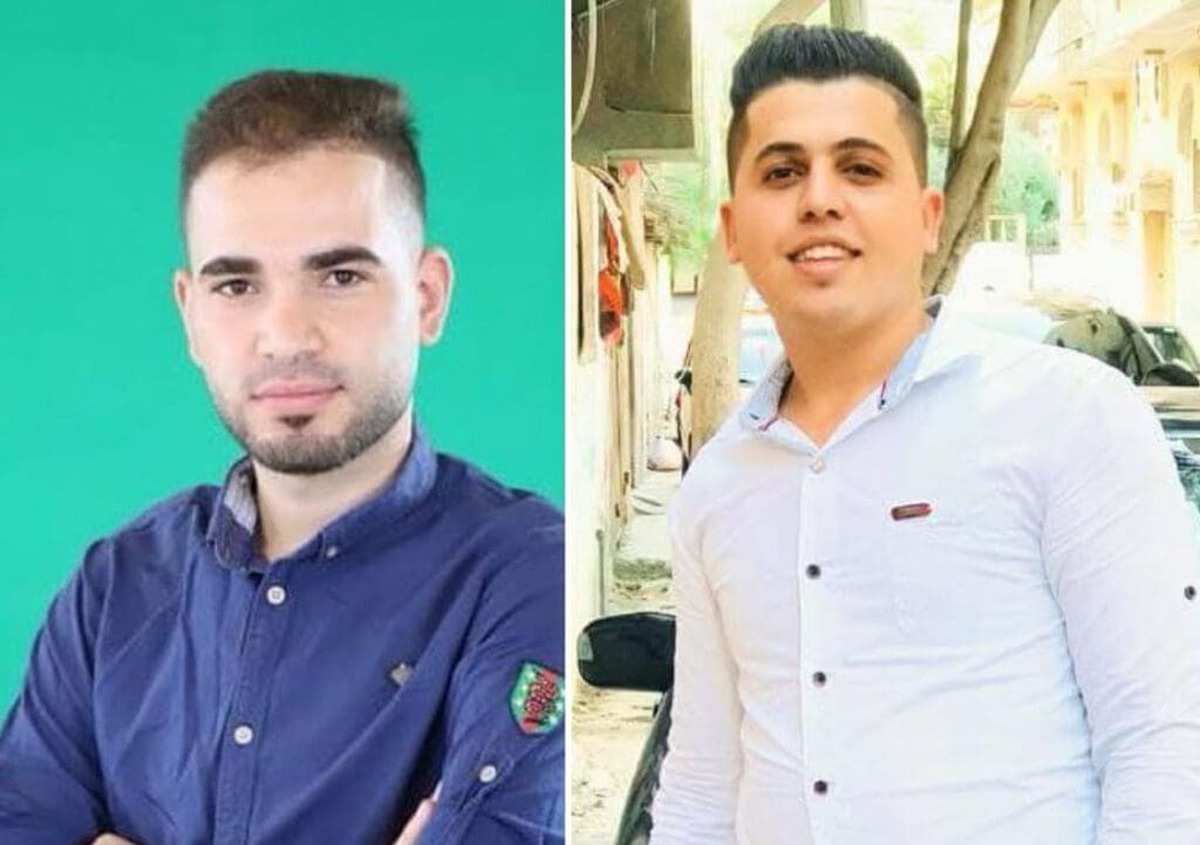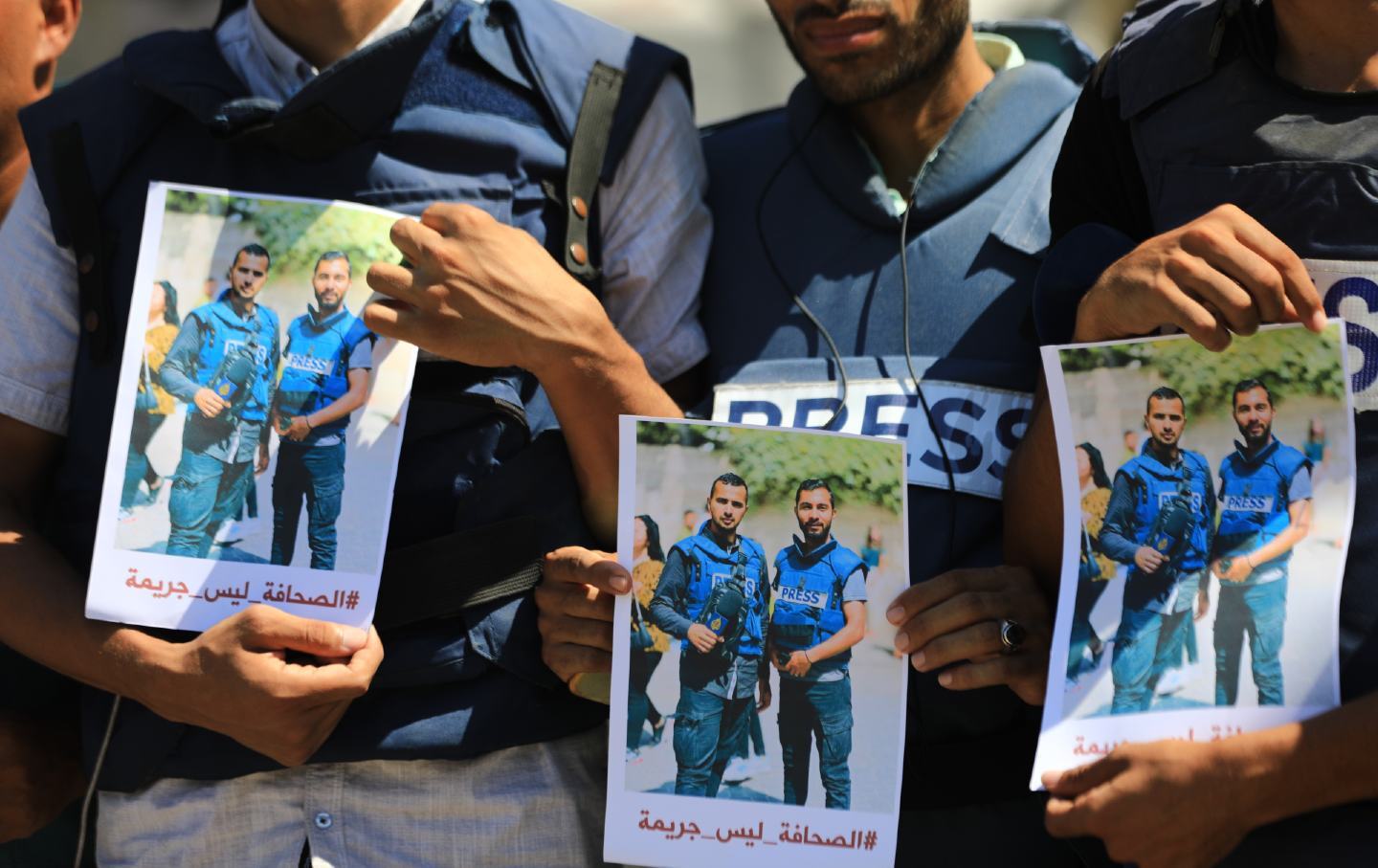Two journalists martyred in Israeli regime’s attack on journalists’ tent in Khan Yunis

Continuing its crimes against civilians and media activists in the Gaza Strip, the Israeli regime directly targeted a journalists’ tent near the Nasser Medical Complex in the city of Khan Yunis, southern Gaza Strip, on Monday morning, April 7.
In a statement, the Palestinian Journalists Forum described the bombing as a “heinous crime and a deliberate targeting of journalists that violated all international laws and conventions.”
The Quds News Network identified one of the killed journalists as Helmi al-Faqawi. The Palestinian Information Center and the Quds News Network identified the other victim as Yusuf Al-Khazandar, a young man who was in the area when the strike took place.
The Palestinian outlet said another journalist, Ahmed Mansour, sustained severe injuries and burns from the attack. It published a picture of Mansour inside a tent on fire.
The Quds News Network is reporting that the Palestinian, who is also a father, is fighting for his life with “catastrophic burns” and that doctors are “desperately trying to save him”.
Al Jazeera photographer Mahmoud Awad was also wounded in the attack.
The outlet reported that another of the journalists, Ihab Al-Bardini, who was wounded is also in critical condition.
It said Al-Bardini was struck in the head by shrapnel, which exited through his eye.
Others injured include Hassan Eslaih, Ahmad Al-Agha, Mohammad Fayek and Abdallah Al-Attar.
Attack on genocide narrators in Gaza
According to a report by the Watson Institute for International and Public Affairs’ Costs of War project, Israel’s war on Gaza has killed 232 journalists – an average of 13 per week – making it the deadliest conflict for media workers ever recorded.
More journalists have been killed in Gaza than in both world wars, the Vietnam War, the wars in Yugoslavia and the United States war in Afghanistan combined, the report found.

The report said it was unclear how many Palestinian journalists in Gaza have been specifically targeted by Israeli attacks and “how many were simply the victims, like tens of thousands of fellow civilians, of Israel’s bombardment”.
However, it cites the Paris-based Reporters Without Borders (RSF) as documenting 35 cases where Israel’s military likely targeted and killed journalists because of their work by the end of 2024.
The attacks on journalists in Gaza, where nearly no foreign correspondents have been granted access, have intensified a trend where local reporters – often underpaid and underresourced – face the greatest risks, according to the Costs of War project.
“Across the globe, the economics of the industry, the violence of war, and coordinated censorship campaigns are turning more conflict zones into news graveyards, with Gaza being the most extreme example,” the report said.